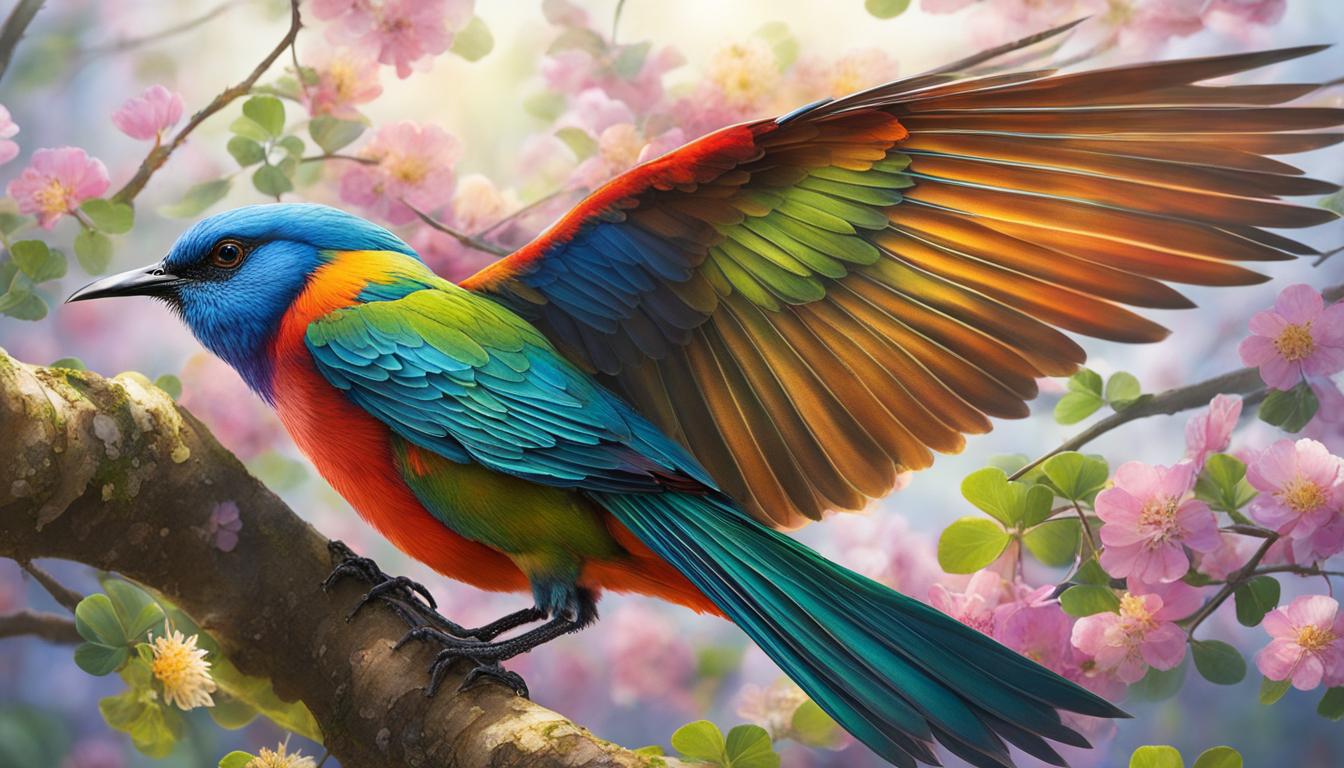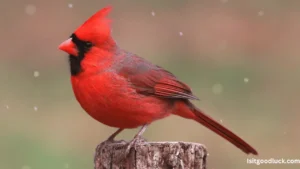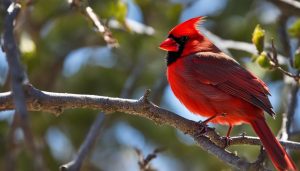In many cultures around the world, certain birds are considered to be symbols of good luck. These birds are believed to bring fortune and positive energy to those who encounter them. This article will explore 15 popular birds that are associated with good luck according to various cultures and traditions.
From the vibrant cardinal to the peaceful dove, each bird carries its own symbolism and brings a sense of fortune to those who encounter them. Embrace the presence of these lucky symbols and appreciate the messages they carry.
Contents
Key Takeaways:
- The cardinal bird is considered a symbol of good luck in North America.
- The magpie is regarded as a symbol of happiness and good fortune in many cultures.
- The blue jay is known as a symbol of good fortune and positive energy.
- The robin is considered a symbol of luck and hope according to Irish superstition.
- The dove is widely recognized as a symbol of peace and blessings.
The Cardinal: A Lucky Symbol of North America
The cardinal bird, belonging to the family Cardinalidae, is considered a symbol of good luck in North America. With its vibrant red plumage, the cardinal is believed to bring positive energy and a change in fortune. Known for their melodious songs and robust nature, cardinals are often associated with courage, passion, and strength.
In Native American cultures, the cardinal is seen as a messenger between spiritual realms, carrying blessings and guidance to those who encounter it. Its striking appearance and joyful song make it a beloved symbol of good fortune and prosperity. The cardinal’s presence is thought to bring confidence, determination, and inspiration to pursue one’s dreams.
The cardinal’s symbolism in North America extends beyond luck and fortune. This iconic bird is also associated with the changing seasons, particularly the arrival of spring. As the winter ends and the cardinal’s vibrant red feathers stand out against the fresh green landscape, it is seen as a symbol of hope, renewal, and new beginnings.
The Cardinal’s Symbolism
The cardinal’s symbolism goes beyond just luck and fortune. Here are some key aspects of its significance:
- Strength and Courage: The cardinal’s vibrant red color represents strength and courage, encouraging individuals to face challenges with determination and resilience.
- Passion and Vitality: The cardinal’s energetic nature and melodious song symbolize passion, vitality, and the pursuit of joy in life.
- Spiritual Guidance: In Native American cultures, the cardinal is believed to carry messages from the spiritual realm, providing guidance and blessings to those who encounter it. It is seen as a reminder to trust one’s instincts and follow their spiritual path.
“The cardinal’s presence brings a sense of hope and optimism, reminding us to embrace life’s blessings and cherish the opportunities that come our way.” – Unknown
Overall, the cardinal bird holds a special place as a lucky symbol in North America, bringing positive energy, strength, and guidance to those who appreciate its beauty and significance.
The Magpie: A Winged Messenger of Good Fortune
In many cultures around the world, the magpie, a member of the Corvidae family, holds a special place as a symbol of happiness and good luck. Known for its striking black and white plumage, the magpie has captivated the imaginations of people for centuries. From Europe to China to Native American cultures, this bird is revered as a bearer of positive energy and fortune.
In Europe, spotting a magpie is often associated with good luck. According to an old rhyme, the number of magpies seen can determine the type of luck that awaits. For example, “One for sorrow, two for joy” suggests that seeing two magpies brings happiness and good fortune. The magpie’s presence is believed to bring a change in fortune and signify the arrival of positive experiences.
“One for sorrow, two for joy.”
In Chinese folklore, the magpie is also considered a symbol of happiness. Legend has it that magpies build a bridge called the “Bridge of Magpies” on the seventh day of the seventh lunar month, allowing two separated lovers, represented by the stars Vega and Altair, to reunite. This story is celebrated during the Qixi Festival, also known as Chinese Valentine’s Day, and is believed to bring blessings of love and good luck.
Magpie Superstitions and Native American Cultures
In addition to Europe and China, Native American cultures also regard the magpie as a bird of good luck. For many tribes, the magpie is considered a messenger that brings tidings of positive events and opportunities. Its ability to mimic sounds and display intelligence further adds to its mystical reputation.
In Native American folklore, magpies are often associated with change and transformation. Their appearance is seen as a sign that new beginnings and positive energy are on the horizon. The magpie’s striking plumage and unique behavior make it a powerful symbol in Native American cultures, representing a bridge between the physical and spiritual worlds.
| Magpie Superstitions and Beliefs | Native American Magpie Symbolism |
|---|---|
| Seeing a magpie brings good luck | The magpie is a messenger of positive events |
| The number of magpies seen determines the type of luck | The magpie represents change and new beginnings |
| Magpies are associated with happiness | Magpies bridge the physical and spiritual worlds |
Embrace the presence of the magpie as a symbol of happiness, good luck, and positive energy. Whether you spot one perching on a branch or hear its melodious song, allow the magpie to remind you of the joyous possibilities that lie ahead.
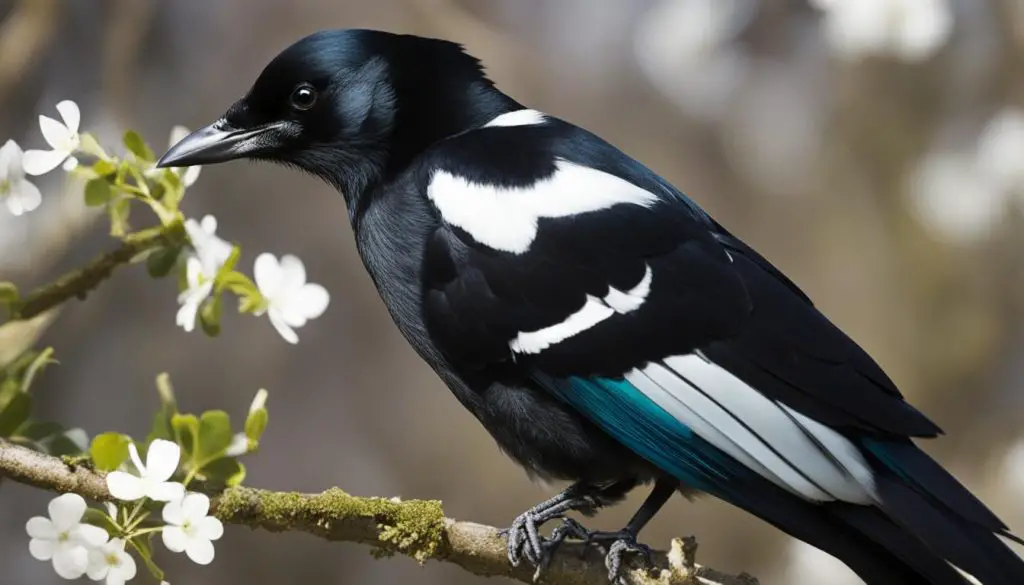
The Blue Jay: A Vibrant Bird of Positive Energy
When it comes to symbols of good fortune, the blue jay stands out as a vibrant and captivating bird. Native to North America, the blue jay is known for its stunning blue plumage and charismatic presence. In many cultures, this beautiful bird is considered a symbol of good fortune and positive energy.
Chinese mythology associates the blue jay with the ability to avoid foes. It is believed that the blue jay’s presence can protect you from harm and guide you towards a path of good luck. Native American art also features the blue jay as a source of positive energy. The bird’s vibrant colors and lively nature represent joy, happiness, and being on the right path.
To fully appreciate the significance of the blue jay as a symbol of good fortune, it’s essential to understand the rich cultural contexts in which it is revered. In Chinese culture, birds hold great symbolism, and the blue jay’s ability to avoid enemies is highly regarded. In Native American traditions, the blue jay symbolizes the importance of embracing joy and following one’s true path in life.
| Symbolism | Meaning |
|---|---|
| Positive Energy | The blue jay brings positive energy and uplifts the spirit. |
| Guidance | It is believed that the blue jay can guide individuals towards good fortune and help them make the right decisions. |
| Protection | In Chinese mythology, the blue jay is associated with protection against enemies and negative influences. |
So, the next time you catch a glimpse of the blue jay, take a moment to appreciate its vibrant beauty and consider the positive energy it represents. Allow its presence to inspire you, guide you, and bring a sense of good fortune into your life.
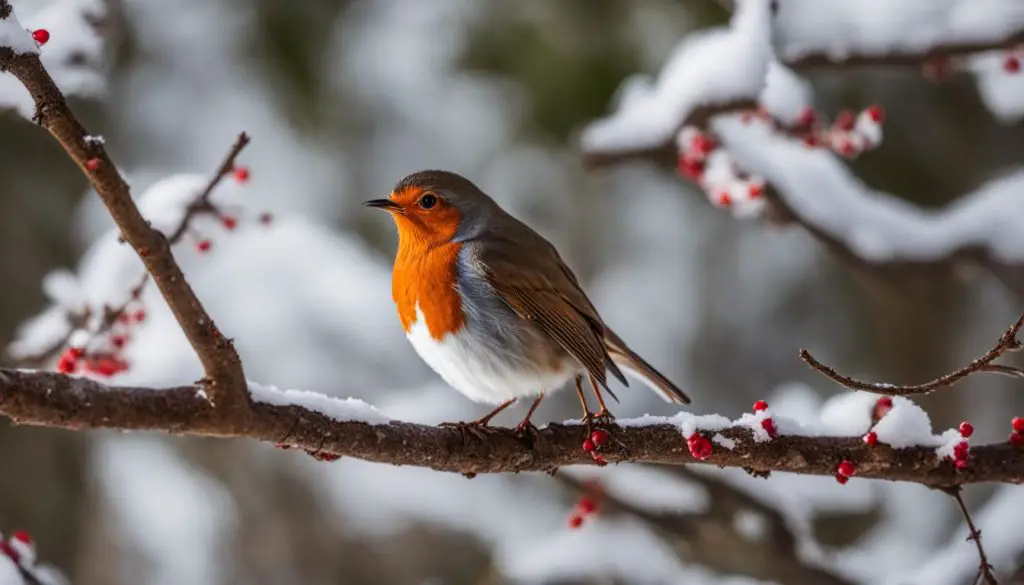
Symbol of Luck, Hope, and New Beginnings
In summary, the robin holds a special place in the realm of luck symbolism due to its association with Irish superstition and the Scottish poem. It is considered a symbol of luck and hope, bringing positive energy and new beginnings. The robin’s vibrant appearance and uplifting song add to its allure, making it a beloved bird in many cultures. Whether you spot a robin in your garden or come across one during a walk, take a moment to appreciate its presence and the potential for luck and hope it brings.
The Dove: A Bird of Peace and Blessings
The dove, with its white plumage, is widely recognized as a symbol of peace and love. In Christianity, the dove represents the Holy Spirit and is often associated with peace. Native American cultures also view doves as symbols of purity and innocence. The presence of doves is believed to bring blessings, hope, and positive energy.
“The dove is a messenger of peace, carrying the spirit of tranquility and harmony wherever it goes.”
The dove’s symbolism as a bird of peace can be traced back to biblical times. In the story of Noah’s Ark, a dove was sent out by Noah to find dry land and returned with an olive branch, signifying the end of the flood and the restoration of peace.
Peace in Native American Cultures
In Native American cultures, the dove is revered for its association with peace and spirituality. It is seen as a guide and protector, bringing a sense of peace to those who encounter it. Doves are often depicted in Native American art, representing the harmony between humans, nature, and the divine.
- The Hopi Tribe: The Hopi tribe believes that the dove brings messages from the spirit world, conveying blessings and positive energy.
- The Lakota Tribe: The Lakota tribe sees the dove as a symbol of peace and unity, guiding individuals towards harmonious relationships and a peaceful existence.
- The Iroquois Confederacy: The Iroquois Confederacy regards the dove as a sacred bird, representing peace and spiritual enlightenment.
The dove’s gentle nature and serene presence make it a powerful symbol of peace and blessings. Its message of tranquility and harmony resonates across cultures, reminding us of the importance of seeking peace in our lives and fostering peaceful relationships with others.

| Symbolism | Meaning |
|---|---|
| Peace | A representation of peace and tranquility. |
| Purity | Associated with innocence, purity, and spiritual enlightenment. |
| Love | Symbolizes love, compassion, and divine unity. |
| Harmony | Represents the harmony between humans, nature, and the divine. |
| Blessings | Brings blessings and positive energy to those who encounter it. |
Conclusion
Birds have always held a special place in cultures around the world, symbolizing good luck and positive energy. Each bird carries its own unique symbolism, bringing fortune and blessings to those who encounter them. From the vibrant cardinal to the peaceful dove, these lucky birds have captivated our imaginations and touched our hearts.
Through their colors, songs, and behaviors, these birds convey messages of hope, joy, and new beginnings. They remind us to embrace the presence of these lucky symbols and appreciate the significance they hold in our lives.
Whether you believe in the power of these birds or simply admire their beauty, there’s no denying the positive energy they bring. So the next time you spot a beautiful bird in the sky or hear its melodious song, take a moment to pause and reflect on the good luck symbolism it carries. Allow yourself to be uplifted by the presence of these winged creatures and embrace the blessings they bring.
FAQ
Which birds are considered symbols of good luck?
The cardinal, magpie, blue jay, robin, and dove are all considered symbols of good luck in various cultures.
Why is the cardinal considered a symbol of good luck?
The cardinal’s vibrant red plumage is believed to bring positive energy and a change in fortune.
What is the symbolism of the magpie?
The magpie is regarded as a symbol of happiness and good fortune in many cultures, representing joy and sorrow depending on the number seen.
What significance does the blue jay hold?
The blue jay is considered a symbol of good fortune and positive energy, associated with avoiding foes and being on the right path.
Why is the robin seen as a lucky bird?
The robin is considered a symbol of luck and hope, especially in Irish superstition, symbolizing new beginnings and the presence of loved ones.
What does the dove symbolize?
The dove is widely recognized as a symbol of peace, love, purity, and innocence, bringing blessings, hope, and positive energy.

